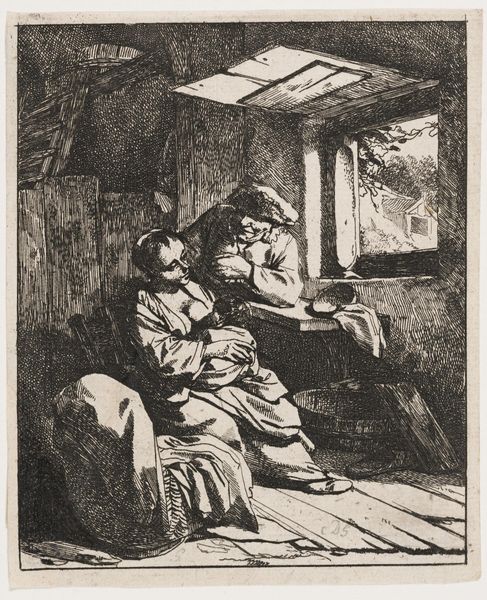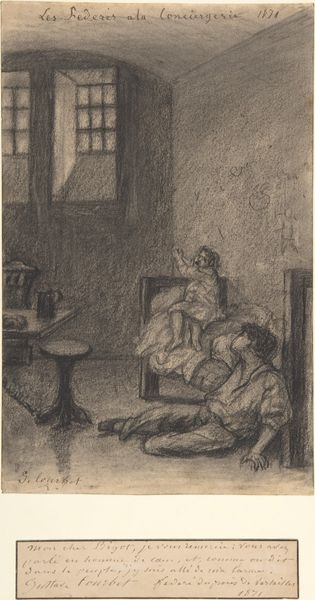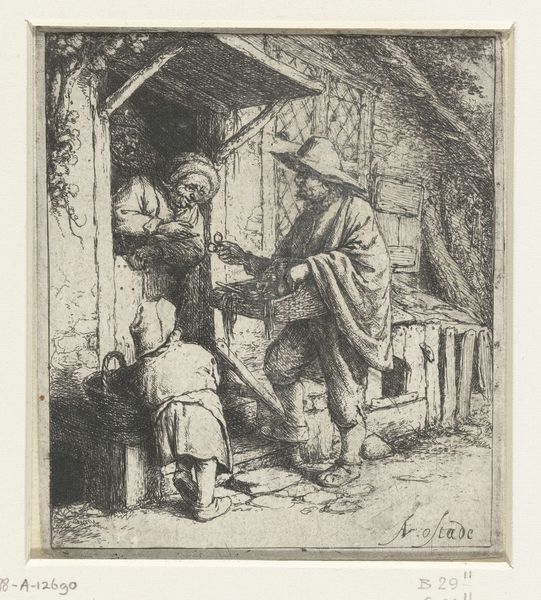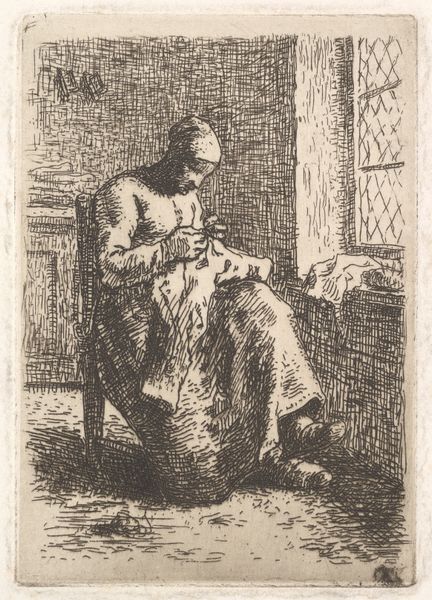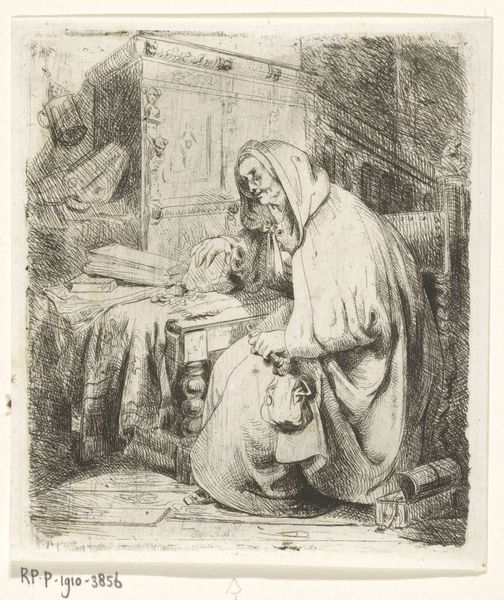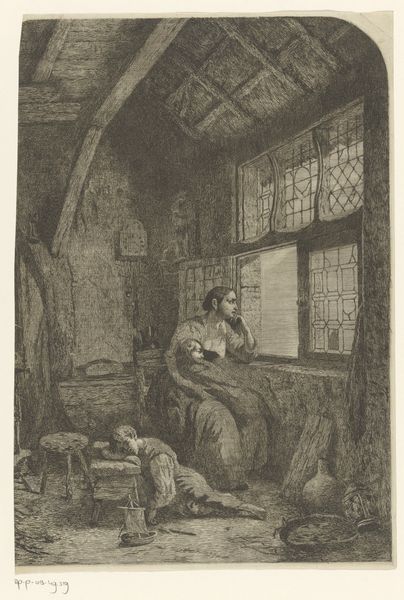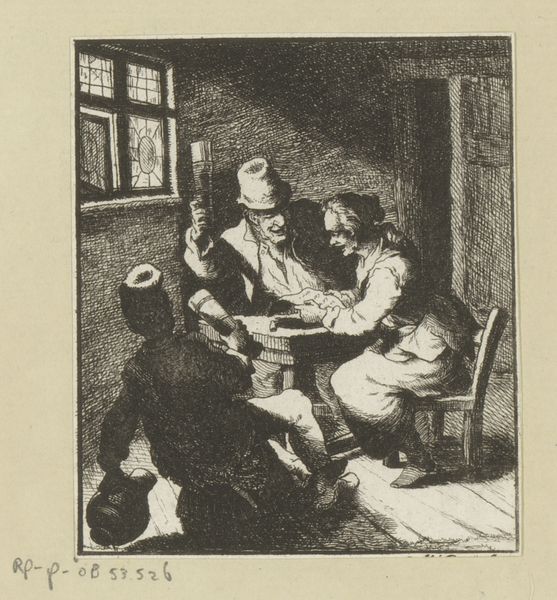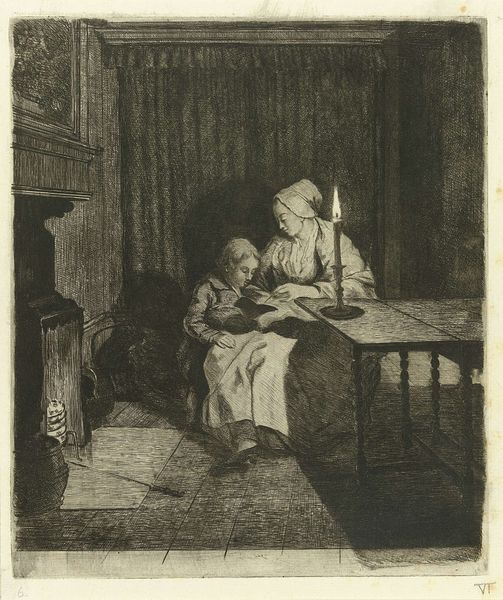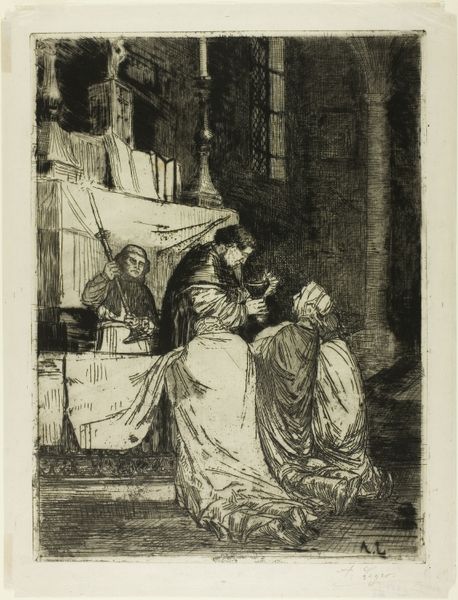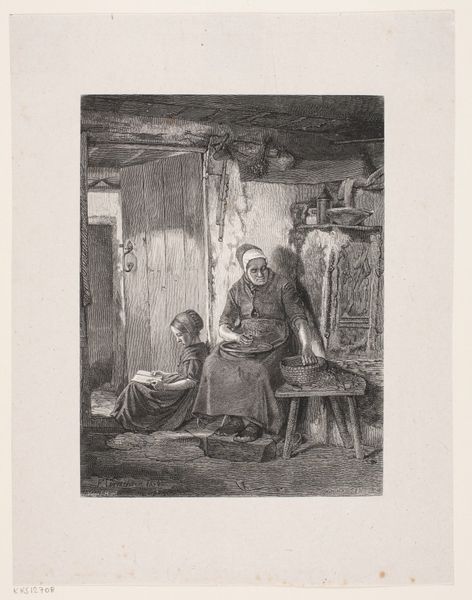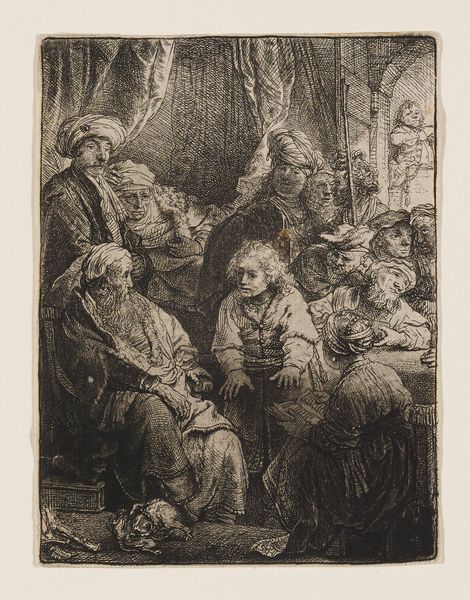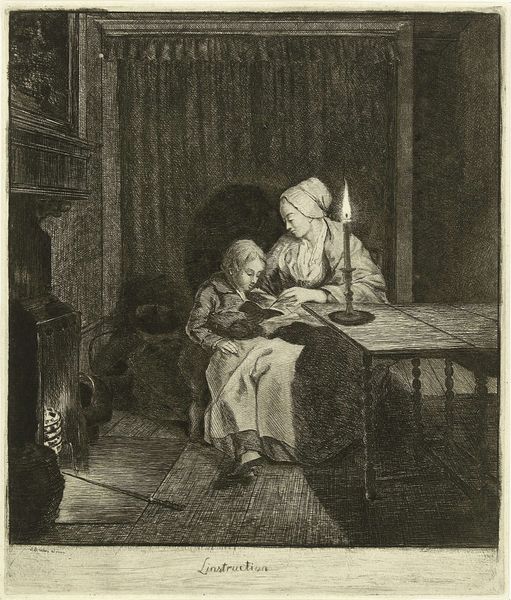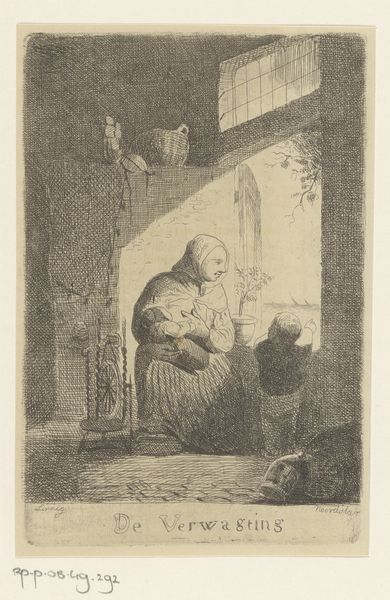
print, etching
#
portrait
#
dutch-golden-age
# print
#
etching
#
landscape
#
genre-painting
#
history-painting
Copyright: National Gallery of Art: CC0 1.0
Curator: Let's discuss "The Young Mother," an etching by Cornelis Bega, known for his Dutch Golden Age genre scenes. What strikes you most about it formally? Editor: The tight interior space is immediately captivating. Bega's use of dense cross-hatching creates such a dark and moody atmosphere, a palpable sense of enclosure. The contrast between the shadowed interior and the bright window is quite dramatic. Curator: That window offers an important glimpse. Consider the broader context: domesticity was increasingly valorized in Dutch society. Scenes of familial life provided a mirror for societal values, even if idealized ones. Bega's image suggests the growing importance of the nuclear family in 17th-century Holland. Editor: I notice how the composition directs the eye. The viewer enters on the left side of the young mother sitting in a chair. Her body language draws you up to her face, into the heart of the print. And what of the textures? Rough wooden planks versus the smooth skin of the figures – remarkable! Curator: Bega frequently depicted domestic life and, sometimes, raucous tavern scenes, offering glimpses into different social strata. Art historians might see a romanticizing of poverty here or at least a normalized depiction of it for an emerging middle-class viewership. He walks a fine line, doesn't he? Editor: Indeed. But if we set that aside, one cannot help but appreciate Bega’s skillful manipulation of line to construct form and depth. Note how the figure of the father seems wedged behind the wooden ledge as if he's merely an addendum. I find the emotional distance unsettling; he's literally looking away from them. Curator: Perhaps hinting at the era's anxieties around providing for a family. The growth of Dutch trade fueled the art market, yes, but economic disparities also grew. "The Young Mother" subtly suggests the burdens placed on the family unit within this developing capitalist structure. Editor: I'm persuaded that it may reveal subtle pressures but the pure artistry remains; from the architectural angles to the contrast and delicate shading. This work allows an intimate observation of human form. Curator: Precisely. These nuanced readings only enhance our appreciation of Bega's contribution to the Dutch Golden Age. Editor: I agree. It's an excellent reminder of the technical innovation, and enduring allure of Dutch Golden Age printmaking.
Comments
No comments
Be the first to comment and join the conversation on the ultimate creative platform.
